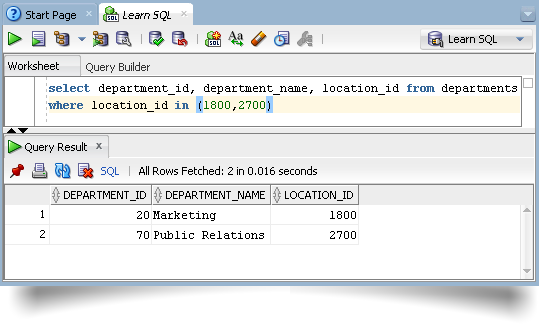Suppose, you wish
to see a list of departments under two different locations i.e. 1800 and 2700.
If you use the BETWEEN operator, you’ll get a list of departments (including
those falling between the two ranges) that you don’t intend to see. Another
alternate will be to use a list of conditions like: location_id=1800 OR
location_id=2700. Although it is a valid condition, but what if you add ten or
more locations to your WHERE clause? Obviously, the statement will grow up in
size and you won’t like typing such long statements that consequently enhances program
code. To cope with the situation, you’re provided with the IN operator, where
you just provide a list of desired values in parentheses, as shown in the
following example. Since location_id is a numeric field, you provided the values
without the quotation marks. Note that only characters and dates used in the IN
list are enclosed within single quotes.
NOTE
The
use of the IN operator is a cleaner way if you are working with long lists of
conditions. Secondly, the IN operator can also contain another SELECT statement
to form a more dynamic WHERE clause.
SQL Statement :
SELECT department_id, department_name,
location_id
FROM departments
WHERE location_id IN (1800,2700);
Output :

No comments:
Post a Comment